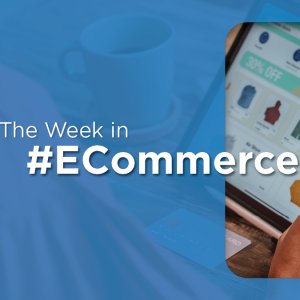Diversity Not Included

STORY INLINE POST
One of the key topics of the last 10 years has been the DEI (diversity, equity and inclusion) drive that many companies have jumped into. Similarly to carbon credits in the ‘90s and environmental initiatives in the ‘70s, DEI had been a crucial theme for companies emerging just before the pandemic hit.
However, it is important to take a step back and look at how this impacts a company’s profit targeting and delivering profit to its shareholders.
The sustainability triumvirate is often forgotten in favor of environmental causes. The real meaning of sustainability is an equal balance between environment, social and economic factors. Without them, no company can thrive in the long run. While environmental investments may seem cumbersome or expensive (like innovation drives to improve supply chain or reverse logistics), the social aspects are more diffuse and identify communities that may have reached an initial deal with a mining company, for example, only to see the benefits being ripped off by local authorities, then demanding more and, hence, destabilizing the extraction projects. The economics of business are far simpler: sales minus cost equal profits.
When the three of them are in play in tandem, then social responsibility and best practices practically start pilling up both positive externalities and public relations efforts. Some soft drinks distribution networks in the Latin American region help employees’ families with education, while using glass or a TetraPak® (better for recycling) and investing in Great Places to Work® initiatives. This is no free lunch but the benefits are obvious. Less turnover, fewer costs in COGS and PR.
In this scenario, current socio-economic trends that highlight the need for equality, a more diverse employee base and including those in need (across the whole value chain) have created a new front, where companies that really embrace the concept will see the benefits in both the short and long term. DEI brings additional value to companies and projects, since different approaches to tackle a problem will mimic product innovation drive but within the core employee base. When viewing a problem in a white Caucasic American environment, you will have a preliminary narrow view, but you have different views in tackling a profit optimization decision-making project when you include other communities as stakeholders.
How should you include DEI into a business or endeavor? Here are my suggestions:.
Identify the real gaps: DEI is a broader concept. It is not just mixing races or ethnicities into a melting pot of business. And it is not mandatory. While, in North America, a broader spectrum of society advocates the inclusion of the Afro-American community, gender equality or more diverse populations, in Latin America the gap is even more basic. Where macho culture is embedded in more conservative countries or given society’s approach to disability, gender becomes a more transcendent topic. Most companies pride themselves on having more women leading their workforce but when it comes to decision-making roles, it is predominantly men. Additionally, the approach to disabilities is non-existent.
Create action plans for the long term, not the short term: An initial “fade” toward incorporating DEI concepts can backfire quickly if there is not a long-term view of its potential benefits or impacts. If we are trying to tackle recruiting immediately just to reach a DEI quota, then we are not understanding the importance of having an adequate workforce. If we have a company with ambitions to tackle the Hispanic market, before hiring Hispanic individuals, it needs to assess how the culture needs to adapt to that vision, including ATL (above the line) or BTL (below the line) marketing actions, messaging and product/service claims. Then, ask who would be the best person to lead it. If it is just about hiring someone to bring in the Hispanic view, it will be diminished quickly by existing company views, which will then lead to attrition.
Involve business functions: This is not an HR project, or a company culture project. Business functions need to understand the importance of DEI on their processes. Marketing will benefit from broader audiences and claims that will make their product appealing to new markets. Sales can benefit from different stakeholders who can interact with clients. Supply can understand the dynamics in different cities regarding how to deliver and how to meet expectations. Boards and management can benefit from diverse points of views in decision-making, experiences and new endeavors.
Culture-driven changes take time: Reflect on not moving with a short-run mindset and assess how diversity will impact your current business culture. Like sustainability, DEI needs a leader within the organization who understands the concept and disseminates that information among leaders. If a shareholder board needs to be engaged and trained, do so. They will be the ambassadors of change. It is not about e-lessonss or seminars, or just the logo. The impact of DEI will change how the culture of the company behaves around a new workforce.
Nowadays, many companies are still late in embracing the sustainability approach, let alone the new DEI drive. This is a challenge when the benefits are not tangible. However, DEI brings benefits for the medium and long run for companies, similarly to innovation.
























